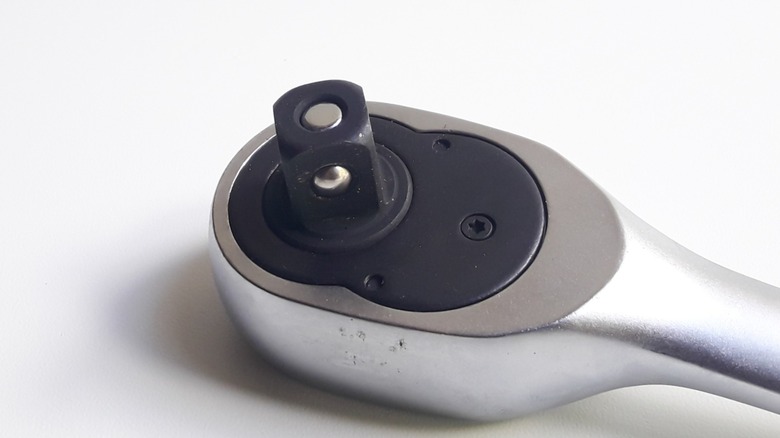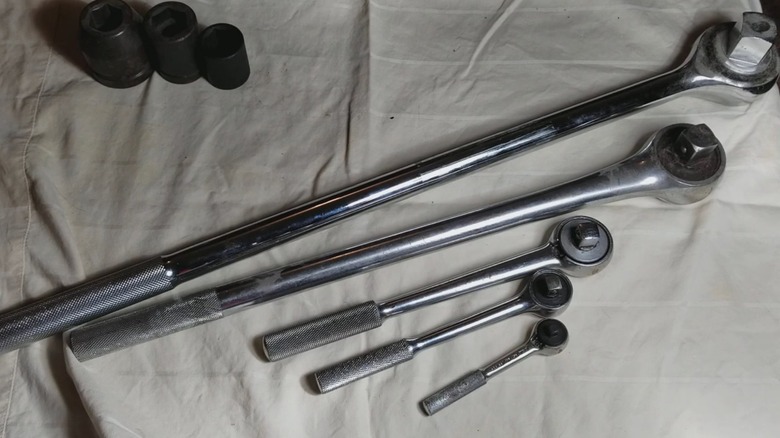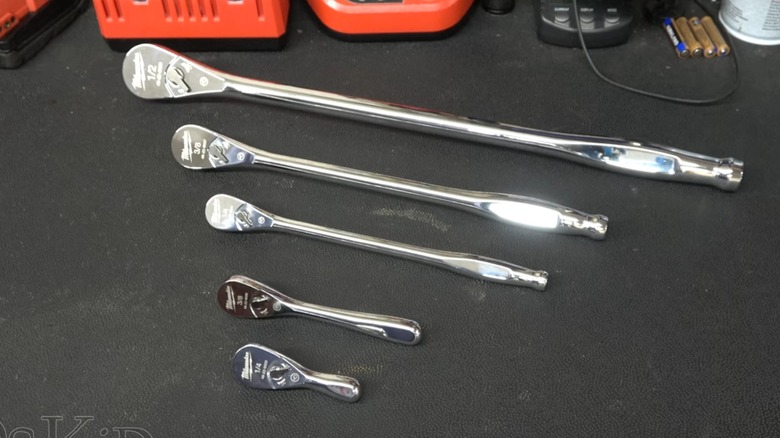
Tools come in a virtually unlimited number of different shapes, sizes, and applications. If you work in the trades or are a hardcore DIY enthusiast, you probably know that a big part of performing any given task properly and efficiently involves selecting the right tools for the job. In order to do that, it's critical that you understand the difference between various tools and their applications, including the different versions of very similar items like socket tools and their drive sizes.
Socket
tools are wildly versatile and essential for a vast number of trades, hobbies, and DIY tasks. They're designed to install or remove fasteners, like nuts and bolts, using a socket that fits over the fastener's head along with either a special type of ratcheting wrench or a power tool to apply rotational force. Sockets attach to these tools via a square drive end on the tool itself and a corresponding hole on the socket. A socket or socket tool's drive size refers to the width of the square connections and, in the United States, is written in inches. Different sockets and tools have different drive sizes and are usually designed to handle a series of fasteners, ranging from small to large. Depending on the type of socket and socket tool, drive ends may contain detent pins or hog rings, which help prevent the socket from falling off the tool while in use.
When it comes to using socket tools, it's important to understand the differences between different drive sizes and the jobs you can perform with each. If you're interested in learning more about why socket drive size matters, stick around. Here's what you need to know.
Read more: Every Major Socket Set Brand, Ranked Worst To Best
Why Does Drive Size Matter?

As mentioned, sockets and socket tools are built with specified drive sizes. A set of sockets in any particular drive size tends to contain a range of sockets from small to large. Understanding the difference between drive sizes can help you not only select the right tool for the job, but it can also help you avoid damaging your gear by using it incorrectly. For example, larger drive sizes are built to handle bigger and heavier-duty jobs. If you use a massive impact wrench on a tiny fastener, you're liable to break the fastener, as the large impact wrench is too powerful for such a small job. Similarly, a small ratchet or an impact wrench with a small drive end won't be able to apply sufficient torque to loosen and remove many larger nuts and bolts — you could even damage your tools by using them in this way.
Even if you forget about the power and torque that different drive sizes provide, you still have to remember that not every drive size can handle every job for other reasons, too. For instance, if you buy a ½-inch drive ratchet to use while building your own computer, you'll likely be unable to find ½-inch sockets small enough to handle your PC fasteners. Because of that, it's critical that you select the right socket tool for the job. If you work in the trades or enjoy DIY tasks, you probably deal with a lot of fasteners of relatively similar size. You can purchase tools designed specifically for these jobs and fasteners, or you can purchase a kit containing various socket tools and sockets in different drive sizes to cover all your bases.
What Are The Most Common Drive Sizes And Their Applications?

While sockets and socket tools can come in numerous different drive sizes, there are a few sizes that see the most use, in both the trades and general DIY projects. These drive sizes include ¼-inch, ⅜-inch, and ½-inch. Of those three, ⅜-inch is among the most versatile, capable of handling socket sizes typically found in both the upper and lower ranges of ¼-inch and ½-inch drive sizes.
Many trades regularly require the use of all three of those drive sizes. Small, ¼-inch drive sockets and socket tools are frequently used for things like small fasteners up to around 10-millimeters to 14-millimeters, depending on the socket set. They're ideal for low torque requirements, and in the automotive world, are useful for tasks like replacing car batteries or ABS speed sensors. As mentioned, ⅜-inch sockets and socket tools represent one of the most versatile drive sizes, and ⅜-inch socket sets typically contain sizes ranging from around 10 or 12 millimeters up to 19 millimeters to 22 millimeters. These tools are ideal for everything from replacing spark plugs to disassembling engines and performing numerous home improvement and DIY jobs, and if you can only own one drive size, ⅜-inch is a solid choice. The largest drive size you'll see commonly is ½-inch. These tools are designed to offer substantially greater torque and breakaway torque capacities, and they're frequently used for tasks like removing car lug nuts and construction.
Besides those three drive sizes, other sizes exist. Larger drive sizes, like ¾-inch and 1-inch, are used primarily in heavy-duty applications, like diesel truck repair. Although ¼-inch is the smallest drive size you'll usually see, there are other smaller tools that work similarly, like impact drivers, which usually feature a ¼-inch chuck for small hex bits.
Want the latest in tech and auto trends? Subscribe to our free newsletter for the latest headlines, expert guides, and how-to tips, one email at a time.
Read the original article on SlashGear.










